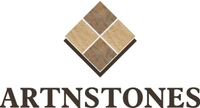Copper 4X12
Product details
"Copper 4x12 Stone Cladding" likely refers to a type of stone cladding that incorporates copper elements. Here's a breakdown of what this might entail:
Stone:
- Material: The primary material used for the cladding, which could be natural stone such as slate, limestone, or quartzite.
- Size: The stone pieces are typically 4 inches in width and 12 inches in length, providing a standard rectangular shape.
- Color: The stone could come in various colors and finishes, depending on the type of stone chosen.
Copper:
- Material: Copper, a metal known for its warm reddish-brown color and metallic sheen.
- Applications: Copper elements can be incorporated into the cladding as accents, trim, or decorative features.
Cladding:
- Purpose: Stone cladding serves both functional and aesthetic purposes, protecting the underlying structure while enhancing the visual appeal of the space.
- Installation: The stone and copper elements are installed onto the wall surface using appropriate adhesives and fasteners.
- Design Options: Various design options are possible, including linear arrangements, staggered patterns, or alternating panels of stone and copper.












